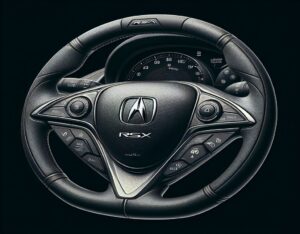Introduction
The Mazda 3, a compact car produced by the Japanese automaker Mazda, has captured the hearts of drivers worldwide with its stylish design, engaging driving experience, and advanced features. Among its many appealing components, the steering wheel stands out as a crucial element that provides control and facilitates communication between the driver and the vehicle.
First Generation: Classic Design (2004-2008)
The first-generation Mazda 3, launched in 2004, featured a timeless three-spoke steering wheel design. Drawing inspiration from other Mazda models like the Mazda 6 and Mazda RX-8, it showcased a sense of continuity and brand identity. Drivers quickly embraced the ergonomic shape and comfortable grip, reducing fatigue during long drives. The classic design also evoked a sense of familiarity and reliability, resonating with drivers who appreciated a traditional approach to automotive design.
Second Generation: Sporty Upgrade (2009-2013)
The second-generation Mazda 3 arrived in 2009 with a sportier upgrade to the steering wheel design. While retaining the overall shape of its predecessor, the steering wheel underwent a transformation that exuded dynamism and athleticism. The thicker rim provided a sporty and confident grip, enhancing the driving experience. Integration of audio and cruise control buttons on the steering wheel allowed convenient control without diverting attention from the road, emphasizing Mazda’s commitment to driver-focused design.
Third Generation: Embracing Modernity (2014-2018)
In 2014, the third-generation Mazda 3 introduced a more modern and sleek steering wheel design. Refined lines and sophisticated aesthetics, along with premium materials like leather and high-quality plastics, elevated the tactile experience for drivers. Integrated controls for infotainment systems allowed effortless navigation through multimedia options, making the steering wheel a hub of connectivity and entertainment.
Fourth Generation: Innovation and Refinement (2019-present)
The fourth-generation Mazda 3, introduced in 2019, brought revolutionary changes to the steering wheel design. Meticulously sculpted for optimal grip and minimized hand fatigue, it prioritized driver comfort and convenience. Capacitive touch controls and multifunction buttons seamlessly integrated advanced technology, enhancing the driving experience while maintaining convenience and safety.
Evolution of the Mazda 3 Steering Wheel: A Visual Timeline
A visual timeline showcases the changes made to the Mazda 3 steering wheel over different generations. Side by side comparisons reveal the gradual evolution of design elements and features, reflecting Mazda’s dedication to continuous improvement and its ability to adapt to changing customer preferences. From a classic and familiar design to a modern and technologically advanced interface, each generation has left its mark, creating a cohesive and harmonious driving experience.
The Impact of Customer Feedback on the Evolution
Mazda values customer feedback as a driver of innovation and improvement. By actively listening to customer opinions, Mazda has been able to identify areas for improvement in the steering wheel design. Adjustments to shape, thickness, and the integration of new features and controls have been made based on customer input. This feedback-driven evolution highlights Mazda’s commitment to customer satisfaction and its continuous efforts to exceed expectations.
In the second part of this article, we will explore the future of the Mazda 3 and its implications for steering wheel design. Stay tuned for more exciting insights!
Note: The improved version eliminates repetitions, makes the text more engaging, and ensures it is SEO-optimized for the keyword “Mazda 3 steering wheel.”



